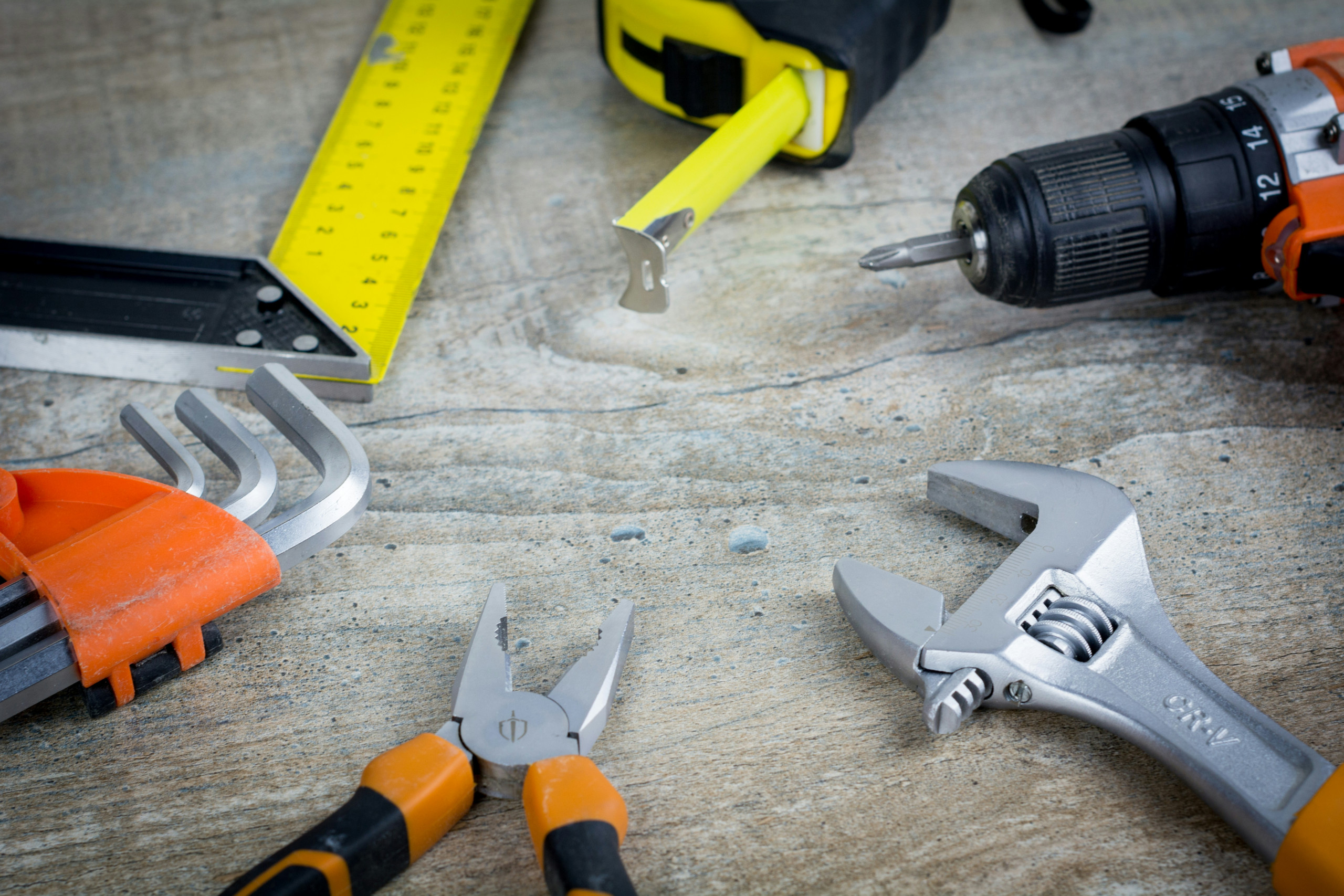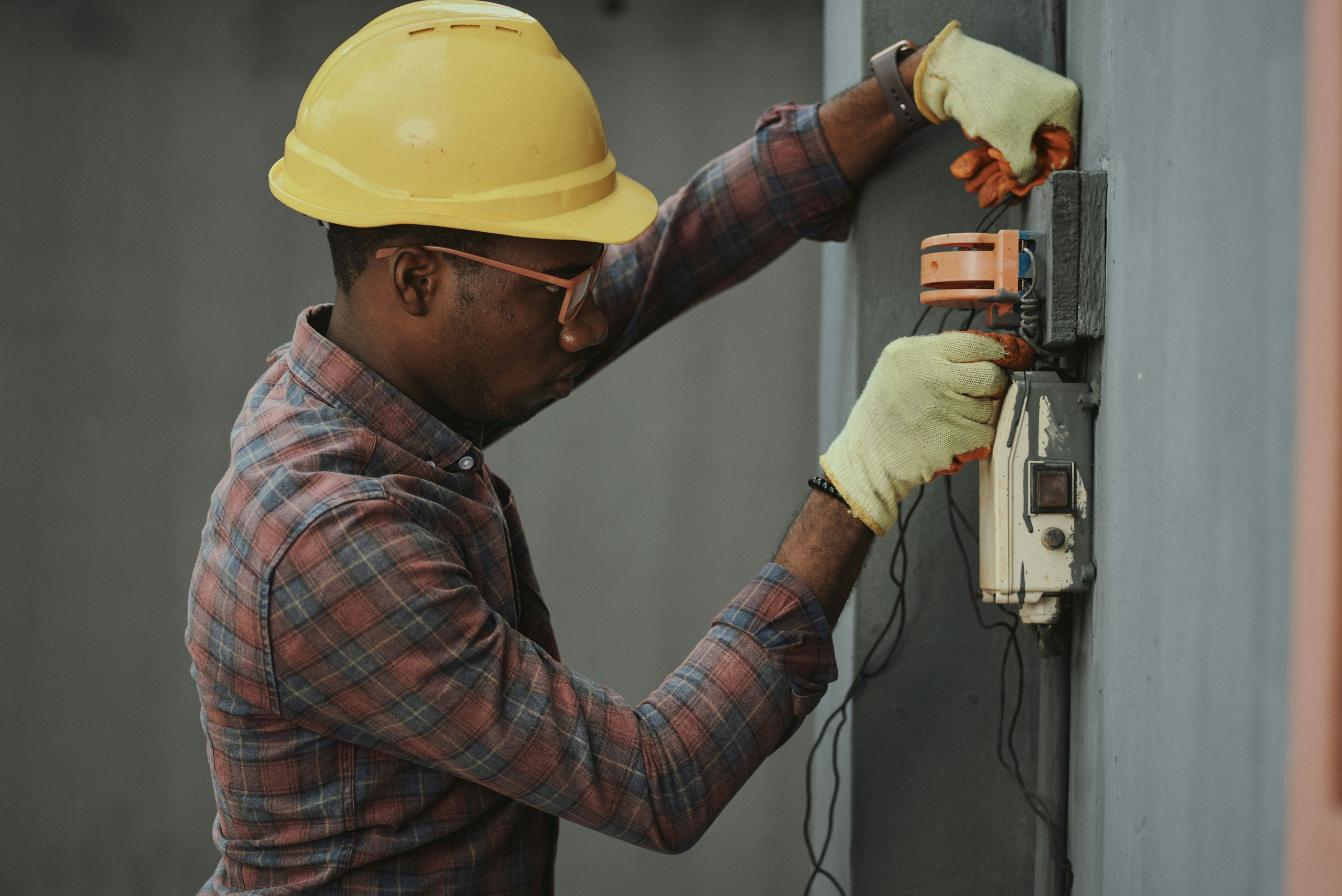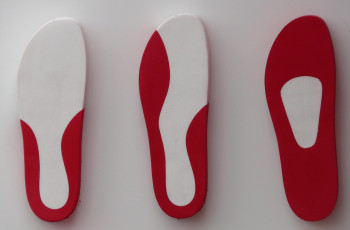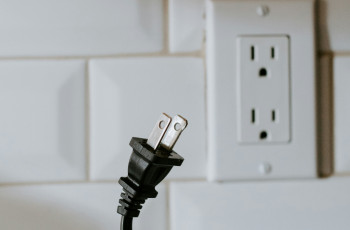In this article, you will gain valuable insights into the maintenance and lubrication requirements for heavy-duty die grinders. Whether you are a professional in the field or simply someone interested in understanding how to keep your die grinder functioning at its best, this article will provide you with the necessary information. By properly maintaining and lubricating your die grinder, you can ensure its longevity and optimal performance, allowing you to tackle the toughest grinding tasks with ease. So, let’s explore the essential steps to keep your heavy-duty die grinder in top shape!
Importance of Maintenance and Lubrication
Why regular maintenance is essential
Regular maintenance is essential to keep your heavy-duty die grinder running smoothly and efficiently. By performing routine maintenance tasks, you can prevent potential malfunctions and extend the lifespan of your die grinder. Neglecting maintenance can lead to decreased performance, increased energy consumption, and even permanent damage to the tool. Therefore, it is crucial to establish a regular maintenance schedule to ensure the longevity and reliability of your die grinder.
Benefits of proper lubrication
Proper lubrication is vital for the optimal functioning of your heavy-duty die grinder. Lubricants help reduce friction between moving parts, which minimizes wear and tear and prevents overheating. By applying the right lubricant at the right intervals, you can ensure smoother operation, improved performance, and increased durability of your die grinder. Additionally, lubrication also aids in preventing rust and corrosion, which can significantly damage the internal components of the tool.
Inspection and Cleaning
Regular inspection of die grinder
Regularly inspecting your die grinder is crucial to identify any potential issues or areas that require attention. Check for loose connections, signs of wear or damage, and ensure that all components are functioning correctly. By inspecting your die grinder, you can address any problems promptly and prevent them from escalating into more significant issues or causing accidents.
Cleaning procedures
Cleaning your die grinder regularly is essential to keep it free from dirt, debris, and other contaminants that can affect its performance. Start by disconnecting the tool from the power source and removing any accessories. Use compressed air or a brush to remove loose debris from the exterior and interior of the die grinder. Taking care to clean the air vents and cooling fins will help maintain proper airflow and prevent overheating. Finally, wipe down the tool with a clean cloth to remove any remaining dirt or residue.
Removing dirt and debris
Over time, dirt and debris can accumulate in the air vents and housing of your die grinder, impairing its performance. To remove dirt and debris, use a small brush or compressed air to dislodge any particles. Pay special attention to the intake and exhaust vents, as well as any other openings on the tool. Regularly removing dirt and debris will help ensure that your die grinder operates at its full potential.
Inspecting electrical components
As part of your regular inspection, it is important to check the electrical components of your die grinder for any signs of wear, damage, or loose connections. Look for frayed or exposed wires, loose connectors, or any other abnormalities that can affect the tool’s electrical performance. If you notice any issues, it is crucial to address them promptly or seek professional assistance to prevent electrical malfunctions or potential hazards.

Regular Lubrication
Understanding lubrication needs
To properly lubricate your die grinder, it is essential to understand its specific lubrication needs. Different die grinders may require different types of lubricants, so consult the manufacturer’s instructions or user manual to determine the appropriate lubricant to use. Additionally, consider the frequency of use and the operating conditions of your die grinder when determining the lubrication schedule.
Types of lubricants for die grinders
There are various types of lubricants available for die grinders, including oils, greases, and dry lubricants. Each type has its own advantages and disadvantages, so it is important to choose the one that is suitable for your specific die grinder model. Oils are commonly used for lubricating the internal components, while greases are ideal for applications that require increased viscosity or protection against contaminants. Dry lubricants, such as graphite or molybdenum disulfide, can be used in situations where wet lubricants may attract dirt or dust.
Choosing the right lubricant
Choosing the right lubricant for your die grinder is essential to ensure optimal performance and longevity. Consider factors such as the type of work you will be performing, the operating environment, and the manufacturer’s recommendations when selecting a lubricant. It is also crucial to use a high-quality lubricant that is specifically designed for die grinders to ensure compatibility and effectiveness.
Lubrication frequency
The frequency of lubrication depends on several factors, including the manufacturer’s recommendations, the type of lubricant used, and the intensity of use. Generally, it is advised to lubricate your die grinder after a specific number of hours of operation or at regular intervals, such as every month. However, it is important to monitor the condition of the lubricant and adjust the lubrication schedule accordingly. If you notice excessive wear, increased noise, or any other abnormal signs, it may be necessary to lubricate your die grinder more frequently.
Proper Storage
Cleaning before storage
Before storing your die grinder, it is essential to clean it thoroughly to remove any dirt, dust, or residue that may have accumulated during use. Cleaning the tool ensures that it is stored in optimal condition and prevents the risk of contaminants damaging internal components or affecting performance. Follow the recommended cleaning procedures mentioned earlier to properly clean your die grinder before storing it.
Protective measures for storage
When storing your die grinder, it is important to take protective measures to prevent damage and maintain its longevity. Store your die grinder in a dry and clean environment, away from excessive moisture or extreme temperatures. Consider using a protective case or cover to shield the tool from dust, debris, and accidental impacts. Furthermore, avoid storing the tool in a position where it may be prone to falling or getting knocked over.
Properly organizing accessories
To ensure easy access and prevent damage to accessories, it is recommended to store them separately from the die grinder itself. Use labeled containers or compartments to keep different accessories organized and protected. This not only helps maintain the condition of the accessories but also saves time when searching for specific attachments or tools.

Preventive Maintenance Checklist
Regular maintenance schedule
Establishing a regular maintenance schedule is crucial for keeping your die grinder in optimal condition. Create a maintenance checklist that includes all the necessary tasks and their respective frequency. Stick to this schedule to ensure that all maintenance tasks are performed consistently and promptly.
Inspecting and replacing worn parts
Regularly inspect your die grinder for any signs of worn or damaged parts. Replace any components that show excessive wear or that may compromise the functionality or safety of the tool. Common parts that may require replacement include grinding wheels, brushes, collets, and bearings. Consult the manufacturer’s instructions or user manual for guidance on replacing specific parts.
Checking for loose connections
Loose connections can lead to poor performance, inefficiency, and even safety hazards. Regularly check all connections in your die grinder, including electrical, air, and accessory connections. Tighten any loose connections and ensure they are secure. If you notice any damaged or corroded connectors, replace them promptly to maintain optimal performance.
Testing functionality
Periodically test the functionality of your die grinder to ensure that all components are working correctly. This includes testing the power supply, speed control, safety features, and any other functions specific to your die grinder model. Any abnormalities or malfunctions should be addressed immediately to prevent further damage or potential safety hazards.
Maintaining air filters
Many die grinders have air filters to prevent dust and debris from entering the tool and affecting performance. Regularly inspect and clean or replace these air filters, as clogged or dirty filters can restrict airflow and cause overheating. Following the manufacturer’s guidelines for maintaining air filters will help ensure proper air circulation and extend the lifespan of your die grinder.
Troubleshooting Common Issues
Identifying common problems
Understanding the common issues that may arise with your die grinder can help you troubleshoot and resolve them effectively. Some common problems include power supply issues, excessive vibration or noise, overheating, and decreased performance. By identifying these issues, you can take appropriate action and prevent further damage.
Troubleshooting techniques
When troubleshooting your die grinder, start by checking the power supply and ensuring that it is properly connected and functioning. Inspect the electrical components for any damage or loose connections. Excessive vibration or noise may indicate an issue with the motor, bearings, or other internal components. Overheating can be caused by a lack of lubrication or restricted airflow, so it is important to address these factors. Finally, if you notice a decrease in performance, consider cleaning or replacing worn parts, inspecting the air filters, or adjusting the lubrication schedule.
Solving issues with power supply
Power supply issues can be caused by a faulty electrical outlet, damaged power cord, or problems with the tool’s internal wiring. Ensure that the outlet you are using is in good condition and capable of providing the necessary power. Check the power cord for any signs of damage, fraying, or loose connections. If you suspect internal wiring issues, it is best to seek professional help or contact the manufacturer for assistance.
Fixing vibration or noise problems
Excessive vibration or noise can indicate a problem with the motor, bearings, or other internal components of your die grinder. Start by checking that all the components are properly assembled and tightened. Clean or replace any worn or damaged parts that may be causing the vibration or noise. If the problem persists, it is advisable to consult a professional technician or contact the manufacturer for further assistance.

Safety Precautions
Using personal protective equipment (PPE)
When operating a heavy-duty die grinder, it is essential to wear appropriate personal protective equipment (PPE) to prevent injuries. This includes safety glasses or goggles to protect your eyes from flying debris, gloves to protect your hands, and hearing protection if the tool generates excessive noise. Additionally, considering wearing a dust mask or respirator to avoid inhaling any airborne particles when working in dusty environments.
Following manufacturer’s guidelines
Always follow the manufacturer’s guidelines and recommendations when operating your die grinder. Familiarize yourself with the specific safety instructions, maintenance procedures, and usage recommendations provided by the manufacturer. By adhering to these guidelines, you can ensure safe and proper operation of your die grinder.
Preventing accidental starts
To prevent accidental starts, always disconnect the die grinder from the power source when not in use or when performing maintenance tasks. Additionally, ensure that the tool is switched off and the power switch is in the “off” position before connecting it to the power supply. This precautionary measure helps prevent unintended activation of the tool, reducing the risk of injuries or accidents.
Safe handling of heavy-duty die grinders
When handling heavy-duty die grinders, it is essential to maintain a firm grip and proper control of the tool at all times. Avoid overexerting force or putting excessive pressure on the tool, as this can cause instability and increase the risk of accidents. If the tool becomes too hot during use, allow it to cool down before handling or storing.
Professional Servicing and Repairs
When to seek professional help
While regular maintenance tasks can be performed by the user, there may be times when it is necessary to seek professional help for servicing and repairs. If you encounter complex issues, electrical malfunctions, or problems that require specialized knowledge or tools, it is advisable to contact a reputable service provider or the manufacturer’s authorized service center. Attempting to fix advanced issues without proper expertise can result in further damage or void the warranty.
Choosing a reputable service provider
When choosing a service provider for your die grinder, it is important to select a reputable and experienced professional. Consider factors such as their expertise, certifications, and track record of providing quality service. Reading reviews or seeking recommendations from other tool users can help you find a trustworthy service provider who can effectively diagnose and resolve any issues with your die grinder.
Understanding warranty coverage
Before seeking professional servicing or repairs, review the warranty coverage provided by the manufacturer. Familiarize yourself with the terms and conditions, including any specific requirements or limitations. Some warranties may require that servicing or repairs are performed by authorized service centers to maintain warranty coverage. Understanding the warranty coverage will help you make informed decisions when seeking professional assistance.
Best Practices for Prolonging Die Grinder Life
Proper usage techniques
To prolong the life of your die grinder, it is important to use it correctly and avoid putting unnecessary stress on the tool. Do not exceed the recommended operating speed or force when using the grinder. Avoid applying excessive pressure or twisting the tool during use. Using the proper accessories and attachments for each specific task can also help prevent premature wear and tear.
Avoiding overheating
Overheating can significantly reduce the lifespan of your die grinder and lead to malfunctions or permanent damage. To avoid overheating, ensure proper ventilation by keeping the air vents and cooling fins clean and unobstructed. Regularly lubricate the tool as per the manufacturer’s recommendations to reduce friction and heat buildup. If you are using the die grinder for extended periods or heavy-duty tasks, consider taking breaks to allow the tool to cool down.
Regular maintenance intervals
Establishing regular maintenance intervals is crucial for prolonging the life of your die grinder. By performing maintenance tasks such as cleaning, lubricating, and inspecting at predetermined intervals, you can identify and address any issues before they escalate. Regular maintenance helps prevent premature wear, ensures optimal performance, and extends the overall lifespan of your die grinder.
Minimizing excessive wear
Excessive wear can lead to decreased performance and premature failure of your die grinder. To minimize wear, ensure that you are using the proper accessories, such as grinding wheels or cut-off discs, for each specific task. Using worn or damaged accessories can put added stress on the tool and compromise its performance. Additionally, regularly inspecting and replacing worn parts, properly lubricating the tool, and avoiding excessive force or pressure can help minimize wear and prolong the life of your die grinder.
Conclusion
In conclusion, proper maintenance and lubrication are essential for the optimal performance and longevity of heavy-duty die grinders. By regularly inspecting, cleaning, and lubricating your tool, as well as following proper storage and maintenance practices, you can ensure that your die grinder operates smoothly and efficiently. It is important to adhere to safety precautions, seek professional help when necessary, and adopt best practices to prolong the life of your die grinder. Remember, by taking care of your die grinder, you can enjoy better performance, increased durability, and overall better results in your work.



